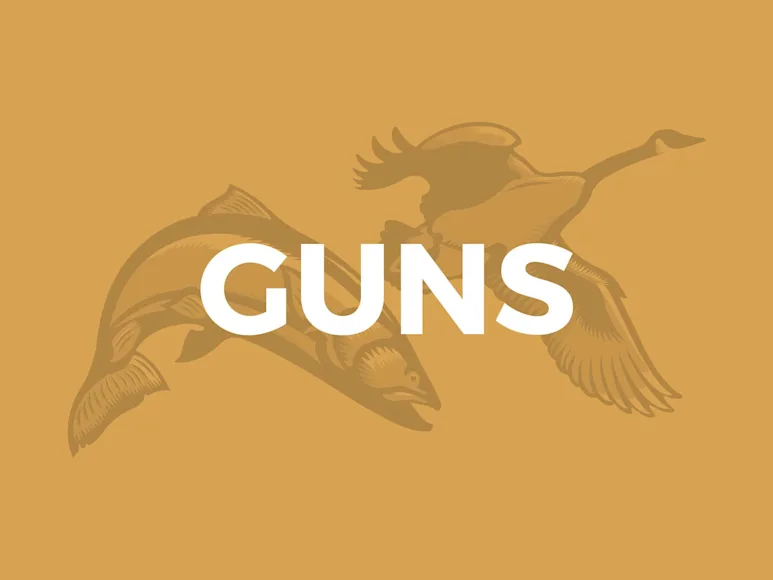_We may earn revenue from the products available on this page and participate in affiliate programs. Learn more ›
_
Before Melvin Forbes came along, the path to a featherweight big-game rifle was to take a conventional bolt action, chop, gouge, hack, and drill it until all the excess steel was gone, then screw in a short barrel the diameter of a soda straw and bed the whole mess in a scrawny stock made out of bass wood. I encountered just such a rifle in a deer camp in the Adirondacks in 1969, and it frightened me so badly I lived in the woods for two days.
In the early 1980s, a West Virginia gunsmith named Melvin Forbes was approached by a customer who, the preceding fall, had been caught in a Montana blizzard and, at the end of his strength, was forced to hang his heavy rifle in a tree in order to slog through the drifts. So when he got back, he asked Melvin to build something really light, and Melvin did. Having a horror of not doing things right, he built what the man wanted using a Remington 600 action, and turned out a .308 that weighed under 6 pounds with scope and was not a boiled-down monstrosity.
But then Forbes thought, why not do the job from scratch, and really do it right? He got together with two friends from the aerospace industry and designed a Kevlar/graphite stock that weighed only 16 ounces, but was stiffer than a steel barrel, and so strong that a pickup truck could roll over it without doing more than chipping the paint. Then, he designed his own bolt action, looking at things that people had never looked at before, even down to the scope mounts. And when he was done there was no excess weight to chop, hack, or gouge because it was never there in the first place. His first rifle, Ultra Light Arms serial number 1, weighed just over 5 pounds with scope. It had a 20-inch #1 contour barrel, a full-sized stock, and the same amount of bearing area in the bolt lugs as a standard rifle. (Nosler had an Ultra Light action on one of its test rifles that cycled over a million rounds before it was retired.) The gun was dead accurate, stable, safe, and mild-kicking.
Ultra Light Arms (later New Ultra Light Arms)
was started in 1983. Since then, Forbes has turned out several thousand in all calibers from .22 rimfire to .416 Rigby. Prices range from $3,000 to $3,400-plus, depending on what kind of options you want. Melvin has 9 different models, and offers all sorts of stock colors and camo patterns, Timney or Jewell triggers, muzzle brakes or not, right- or left-hand actions, and on.
Forbes had always wanted to produce a more affordable rifle and, in the early 90s made a deal with Colt Industries to produce a non-custom version of his design. Colt, which at the time would have screwed up the recipe for ice water, botched the project, and few guns were produced.
But the idea remained, and now there will be an affordable Ultra Light, produced by Forbes Rifle LLC. This is a joint venture. Titan Machine Products, in Westbrook, ME, will do the actions. Timney triggers will remain as standard. The barrel maker has not been named, but Melvin auditioned different makes until he found one that shot the way he liked. The stocks will continue to be made at the NULA factory in West Virginia.
The MSRP, as of now, is $1,500, which places it in the upper tier of factory guns and way below custom rifles. Only 24-inch barrels will be offered, chambered in .270 and .30/06. Later on we will see .25/06, 7mm Remington Magnum, and .300 Winchester Magnum. The weight will be 5 ¼ pounds without scope. The basic stock color will be black, but other solid colors will later brought on line (no camo patterns). The first guns should be appearing at dealers in the first quarter of 2012.
How good are they? Perhaps the best way to answer is thus: I got my first Ultra Light in 1986. Since then, I own, or have owned them in .22 rimfire, .22/250, .220 Swift, .270, 7mm Weatherby Magnum, .300 Winchester Magnum, .30/06, 6.5×55, 7mm/08, .340 Weatherby, .308, and .338. And I paid for them all. (I couldn’t afford to keep them all, but that’s another story.) They are go-to rifles. I have used them a ton, from Africa to Alaska. A higher endorsement than that I cannot give. And now you can get one at half the price I paid.






